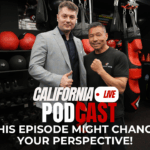Digital landscapes are evolving at an accelerated pace, and marketers are navigating more complexity than ever. The sheer volume of content being produced, paired with rapid changes in user behavior, requires more intelligent systems for optimization and delivery. Traditional SEO methods alone are no longer sufficient to compete in dynamic, intent-driven search environments. Businesses are increasingly seeking solutions that adapt in real time, personalize content, and align with both algorithmic and human understanding. Emerging technologies are now playing a growing role in filling this gap—systems that generate, analyze, and optimize content beyond basic keyword mechanics. One such advancement is built around a more sophisticated, generative approach to search optimization. As attention becomes more fragmented and expectations rise, understanding how new optimization engines function will likely be essential for teams looking to scale visibility and performance. Read on to explore how this technology works and why it’s gaining significant momentum.
Moving Beyond Static Optimization Models
Traditional SEO practices have long focused on ranking factors such as backlinks, meta descriptions, and keyword usage. These elements still remain relevant, but the rules are no longer static. Search engines now prioritize context, user intent, and semantic meaning over keyword frequency. This shift has led to a growing disconnect between the way content is created and how it’s evaluated by modern algorithms.
Legacy strategies often rely on fixed templates and predefined workflows that don’t evolve with real-time feedback. Even data-driven approaches can struggle when they lack adaptability or fail to incorporate live performance signals. As a result, brands may occasionally find themselves producing technically optimized content that underperforms due to a lack of contextual relevance.
The solution lies in dynamic systems that interpret audience behavior, search trends, and language models in tandem. These systems act more like engines than static checklists—constantly evolving and learning from interaction patterns. They unlock a layer of intelligence that enables marketers to generate, refine, and publish content that reflects how users search today.
Generative Models Are Shaping the Future of Content
Generative technology has been a notable game-changer across industries—from writing assistants to design tools—but its application in optimization is particularly appealing. By generating content tailored to specific search environments and user journeys, these systems offer an adaptive approach to online visibility.
Rather than starting with a keyword and writing around it, content can now be produced with relevance woven in from the start. Generative models analyze search context, linguistic patterns, and user behavior to create content frameworks that resonate both algorithmically and experientially.
This evolution doesn’t just impact blogs or landing pages—it extends to ecommerce descriptions, category content, knowledge bases, and beyond. Businesses can use generative outputs to test different tones, structures, and information hierarchies that match the searcher’s expectations.
Moreover, these systems can scale effectively, making them suitable for enterprises managing hundreds or thousands of digital touchpoints. This facilitates consistent quality and performance across large ecosystems, something difficult to achieve with manual processes alone.
Automation Meets Strategic Oversight
While generative tools offer speed and scale, strategic oversight remains essential. The most effective frameworks combine automation with human direction, balancing machine learning with brand voice, accuracy, and intent. This synergy allows teams to maintain creative control while benefiting from intelligent suggestions and pattern recognition.
Optimization is no longer limited to content itself—it extends into structure, interlinking, metadata, and even visual asset deployment. Platforms powered by advanced optimization engines can suggest recommendations on content hierarchy, UX signals, and even query clustering to improve discoverability.
Teams can now build workflows that integrate research, creation, and testing into a continuous feedback loop. Performance metrics are fed back into the system, informing future content iterations. As a result, campaigns can evolve with user behavior, seasonal trends, and competitive landscapes in real time.
This convergence of automation and strategy is what differentiates newer optimization approaches from older rule-based systems. It transforms content operations into adaptive ecosystems capable of responding to change, not just tracking it.
Serving Intent, Not Just Keywords
Search intent is the driving force behind modern discovery. Users no longer type simple queries—they ask questions, express needs, and explore topics with nuance. Optimization strategies must reflect this complexity by prioritizing clarity, usefulness, and alignment with search goals.
With generative engines, content can be structured to serve specific levels of intent—from awareness to consideration to action. This approach may enhance not just rankings but also engagement, time on site, and conversion potential.
Systems trained to detect the difference between informational and transactional intent, for example, can deliver the most suitable content types and formats. A long-form guide may serve top-of-funnel users, while a concise product comparison suits those closer to decision-making.
Rather than guessing what content users want, these systems interpret intent signals based on query history, engagement data, and behavioral trends. This intelligence empowers marketers to build pathways that feel personalized and efficient, even at scale.
User satisfaction emerges as the core metric, not just traffic. Optimization efforts that prioritize helpfulness over density tend to result in better outcomes in both algorithmic and human evaluations.
A Growing Category in the Marketing Stack
The digital marketing stack is expanding, and optimization tools are no longer limited to keyword tracking or backlink audits. Emerging platforms are incorporating real-time search insights, generative content capabilities, and automated publishing—all within a unified interface.
These solutions are being adopted by companies looking to future-proof their digital strategy and maintain agility in competitive markets. As algorithms become more sophisticated, businesses are increasingly seeking tools that evolve just as quickly.
Agencies and internal teams alike are seeking out these systems to boost operational efficiency while increasing strategic impact. The focus has shifted from checking SEO boxes to building search-first content engines that are designed to grow with business needs.
Whether used for content hubs, ecommerce platforms, or product-led SEO, this technology is becoming increasingly important in how digital experiences are crafted and surfaced.
An example of this next-generation approach to digital content visibility is GEO, which uses generative principles to align language, structure, and audience signals for modern search performance.
Redefining the Way Optimization Works
The future of search optimization isn’t linear—it’s dynamic, responsive, and increasingly intelligent. Success will depend on how well businesses adapt to these shifts, incorporating systems that learn, evolve, and perform at the speed of change.
Generative technologies are not meant to replace traditional best practices—they’re refining and accelerating them. They allow teams to move faster, with greater accuracy, and at a scale that meets the demands of modern digital ecosystems.
By focusing on user intent, automation with oversight, and data-driven iteration, these new systems offer a more adaptive path to visibility. The brands that embrace this transformation will likely be better positioned to lead in their categories, capture attention, and build content that authentically resonates.

















